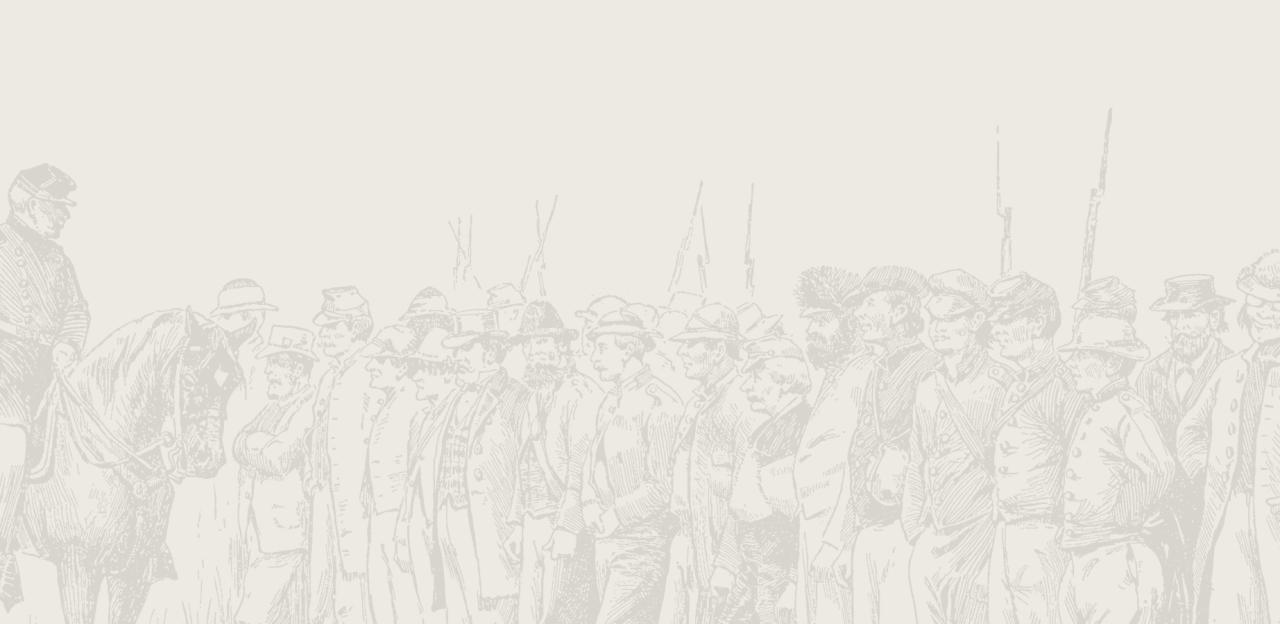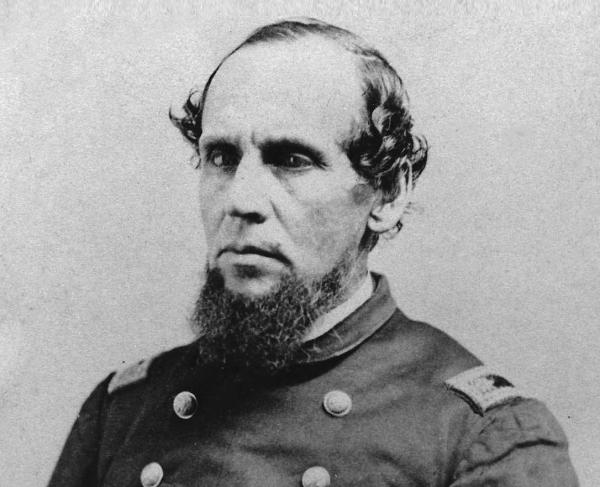Chickamauga

The Battle of Chickamauga
Following the successful Tullahoma Campaign, Union Gen. William S. Rosecrans hoped to continue the offensive and force Maj. Gen. Braxton Bragg’s Confederate Army of Tennessee out of Chattanooga. Rosecrans consolidated Union forces that had been scattered throughout Tennessee and Georgia, and forced Bragg to evacuate the city. Bragg concentrated his forces in LaFayette, Georgia, and determined to reoccupy the valuable Chattanooga. He followed the Union army north, skirmishing with them at Davis’ Cross Roads. By September 17, Bragg had been reinforced with Virginia divisions under Gen. John Bell Hood and a Mississippi division under Brig. Gen. Bushrod Johnson—the first attempt to transport Confederate troops from one theater to another to achieve numerical superiority. With renewed confidence that Chattanooga could pass once again into Confederate hands, on the morning of the 18th Bragg marched his army to the west bank of Chickamauga Creek, hoping to wedge his troops between Chattanooga and the Federal army. As Bragg’s infantry crossed the creek on the 18th, they skirmished with Federal infantry and mounted infantry armed with Spencer repeating rifles. Bragg had been hoping that his advance would be a surprise; Rosecrans, however, had observed the Confederates marching in the morning, and anticipated Bragg’s plan. By the time Bragg’s army had crossed the creek, Union reinforcements had arrived.
The Battle of Chickamauga began in earnest shortly after dawn on September 19th. Throughout the day Bragg’s men gained ground but could not break the extended Union line despite a series of aggressive attacks. Confederate luck changed when, at 11 p.m., Gen. James Longstreet’s divisions arrived at Chickamauga, giving the Confederate force superior numbers. Bragg divided his forces into two wings. Longstreet commanded the left; Lt. Gen. Leonidas K. Polk took charge of Confederate troops on the right. The battle resumed at 9:30 a.m. the next morning, with coordinated Confederate attacks on the Union left flank. About an hour later, Rosecrans, believing a gap existed in his line, ordered Brig. Gen. Thomas Wood’s division to fill the gap. Wood, however, knew that the order was a mistake; no such gap existed in the Federal line, and moving his division would, in turn, open a large swath in the Union position. However, Wood had already been berated twice in the campaign for not promptly following orders. To avoid further reprimand, he immediately moved, creating a division wide hole in the Union line. This was the chance that the Confederates needed. Longstreet massed a striking force, led by Gen. Hood, of eight brigades divided into three lines. Longstreet’s men hammered through the gap that Wood had created, and Union resistance at the southern end of the battlefield evaporated as Federal troops, including Rosecrans himself, were pushed off the field.
George H. Thomas, in a move that would earn him the name “The Rock of Chickamauga,” took command and began consolidating the scattered Union forces on Horseshoe Ridge and Snodgrass Hill. Thomas and his men formed a defensive position, and although Confederates continued to assault and pressed to within feet of the Union line, the Yankees held firm. Thomas withdrew as darkness fell. Although Thomas urged Rosecrans to lead the army in an attack the next day, Rosecrans rejected the idea and remained in Chattanooga. Bragg’s victorious army occupied the heights surrounding Chattanooga, blocking Federal supply lines, but did not pursue Rosecrans.
While Chickamauga was a decided Confederate victory, the results of the battle were staggering. With over 16,000 Union and 18,000 Confederate casualties, Chickamauga reached the highest losses of any battle in the Western theater. Although the Confederates had driven Rosecrans from the field, they had not succeeded in Bragg’s goals of destroying Rosecrans’s army or reoccupying Chattanooga. Fighting would resume less than two months later in the battles for Chattanooga.


